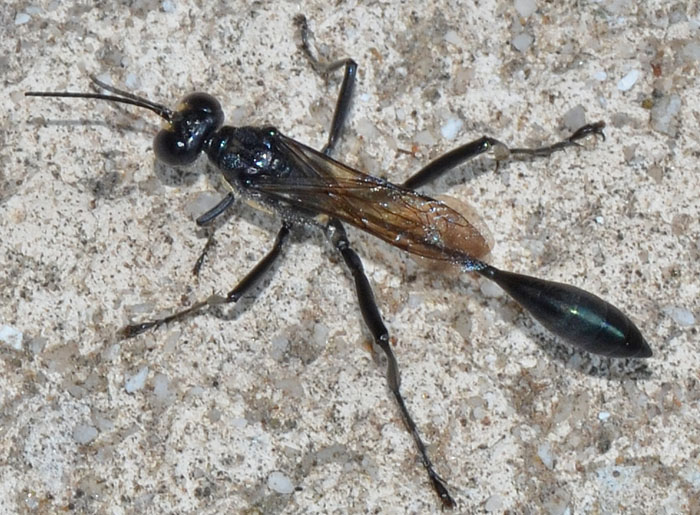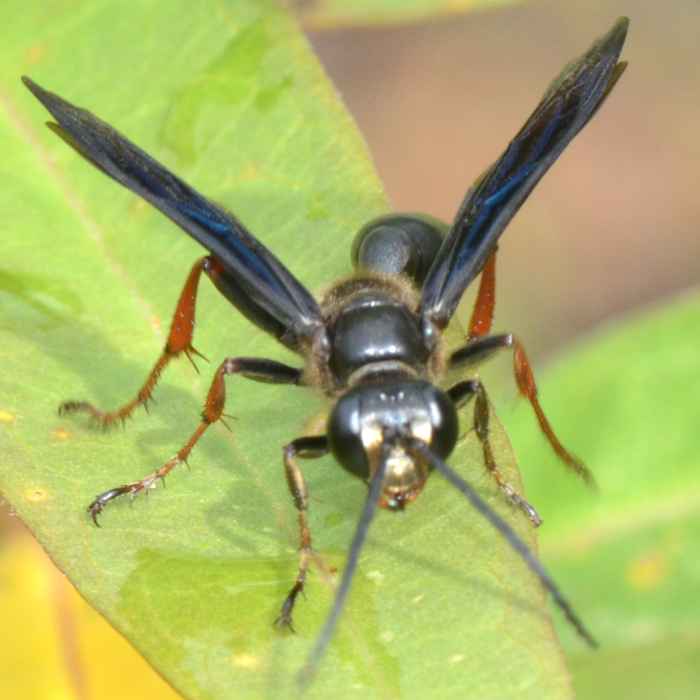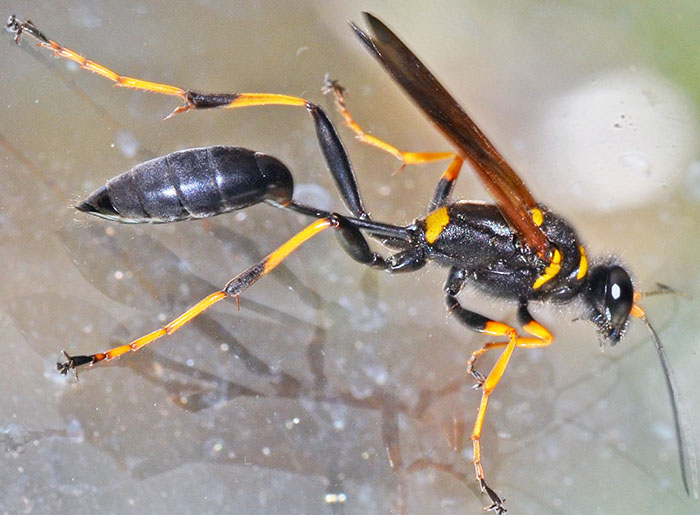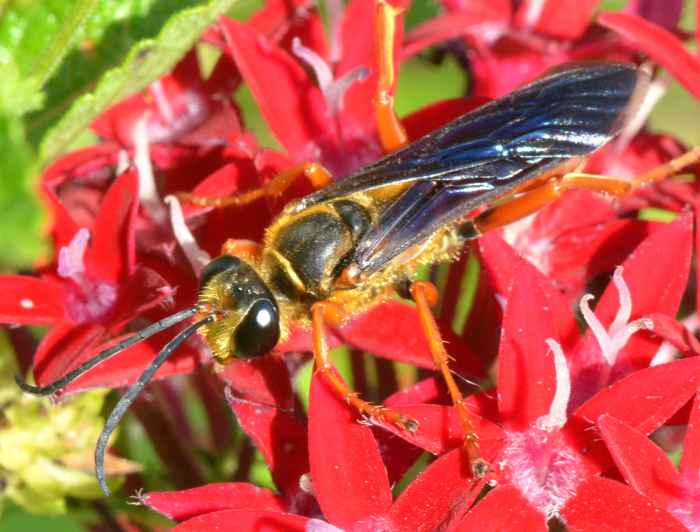 Ammophila procera (Thread-Waisted (Digger) Wasp). | One of my coolest picture so far. This wasp was massive!
It is a thread-waisted (digger) wasp. The scientific name is Ammophila procera. They are solitary wasps and females dig and provision chambers for their offspring. They prefer sandy clay soil and hunt hairless caterpillars to feed their larva (one per egg). I initially thought that it's A. nigricans but a bug guide expert corrected it (thanks!) - this one has silver lines on its thorax. bug guide (this photo): http://bugguide.net/node/view/15540 discoverlife: http://www.discoverlife.org/mp/20q?guide=Sphecidae Bentler: http://www.bentler.us/eastern-washington/animals/insects/wasps/thread-waisted-wasp.aspx | |
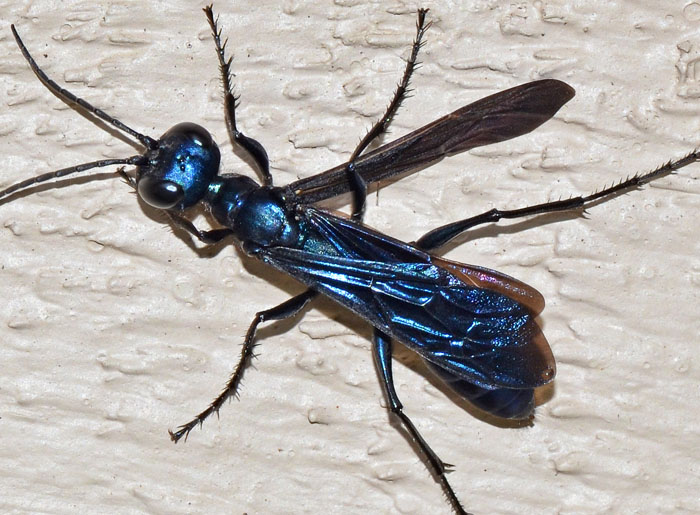 Chlorion aerarium (Steel-blue Cricket Hunter). | Steel-blue Cricket Hunters live wherever their hosts (Gryllus crickets) are found. Females mass-provision several cells with each 2 to 9 nymphs or adults. This hunter had lost one of its wings and fell of our house wall shortly after I took this photo. bug guide (this photo): http://bugguide.net/node/view/991912 | |
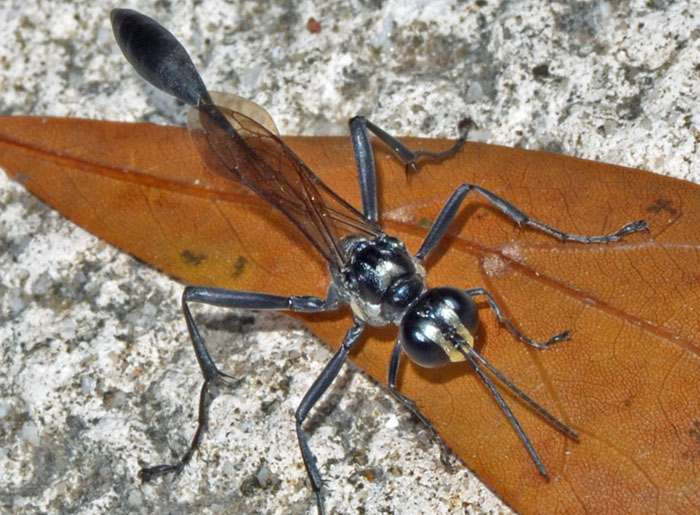 Eremnophila aureonotata ♂. | I found these wasps near our pool on a sunny day but really never saw them again. They are very similar to Ammophila species. Adults take nectar and are often found mating on wildflowers. Females dig burrows and provision them with single large caterpillar of moths and skippers.
bug guide (this photo): http://bugguide.net/node/view/972400 | |
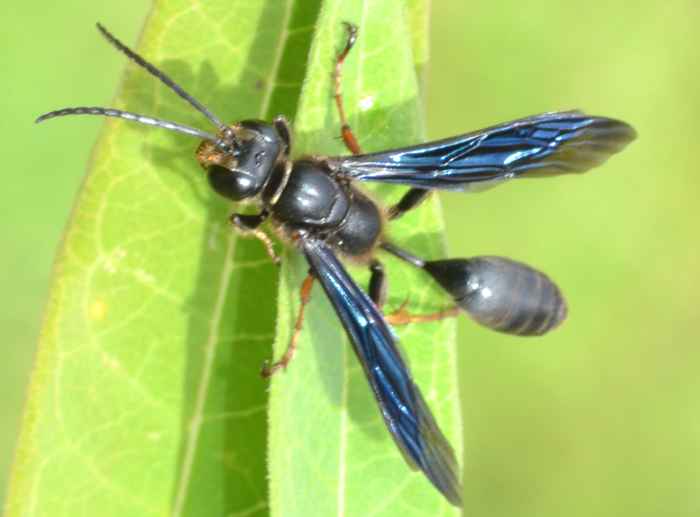 Isodontia auripes (Brown-Legged Grass-Carrier). | I believe this is a Brown-Legged Grass-Carrier (Isodontia auripes). It is found in the Easten US. The brown legs are characteristic. They belong to the grass-carrying wasps because they use grass blades to partition cells and form closing plugs in their cavity nests.
bug guide (these photos): http://bugguide.net/node/view/572477 U Michigan: http://insects.ummz.lsa.umich.edu/sphecidwasps/Isoauripes.html | |
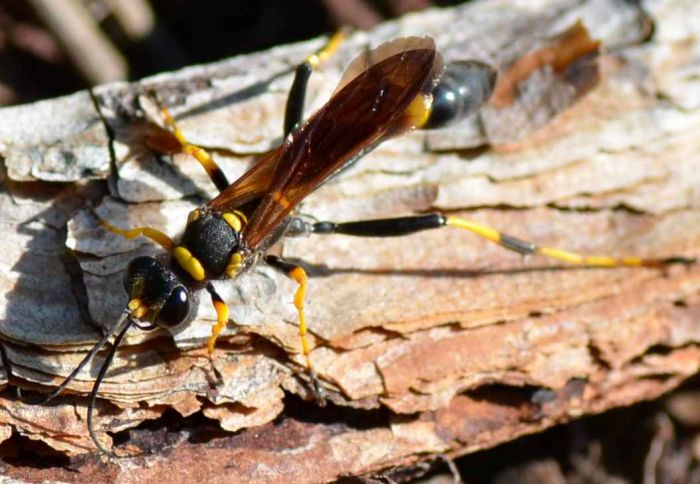 Sceliphron caementarium (Black and Yellow Mud Dauber). | This looks like a 'black and yellow mud dauber' (Sceliphron caementarium). These solitary (thread-waisted) wasps build their nests on houses etc. The mud nests consist of several vertical tubes. The species name is the Latin word for mason. The wasps are about one inch long, do not defend their nests aggressively, and stings are reportedly rare. The small image was taken on 05/27/17.
bug guide: http://bugguide.net/node/view/6610 wikipedia: http://en.wikipedia.org/wiki/Black_and_yellow_mud_dauber | |
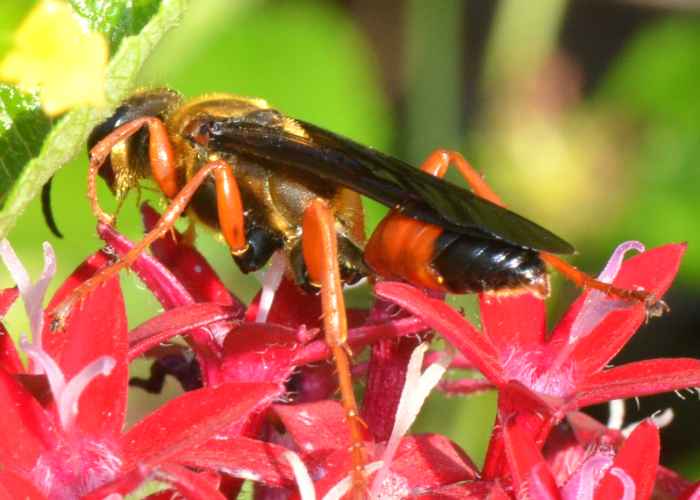 Sphex ichneumoneus (Great Golden Digger Wasp). | The Great Golden Digger Wasp (Sphex ichneumoneus) is found throughout the US. Females dig burrows almost vertically into sandy soil. Radiating out from the central tunnel are cells. Each cell holds one larva and one paralyzed cricket etc. as provision.
bug guide (these photos): http://bugguide.net/node/view/571581 |

